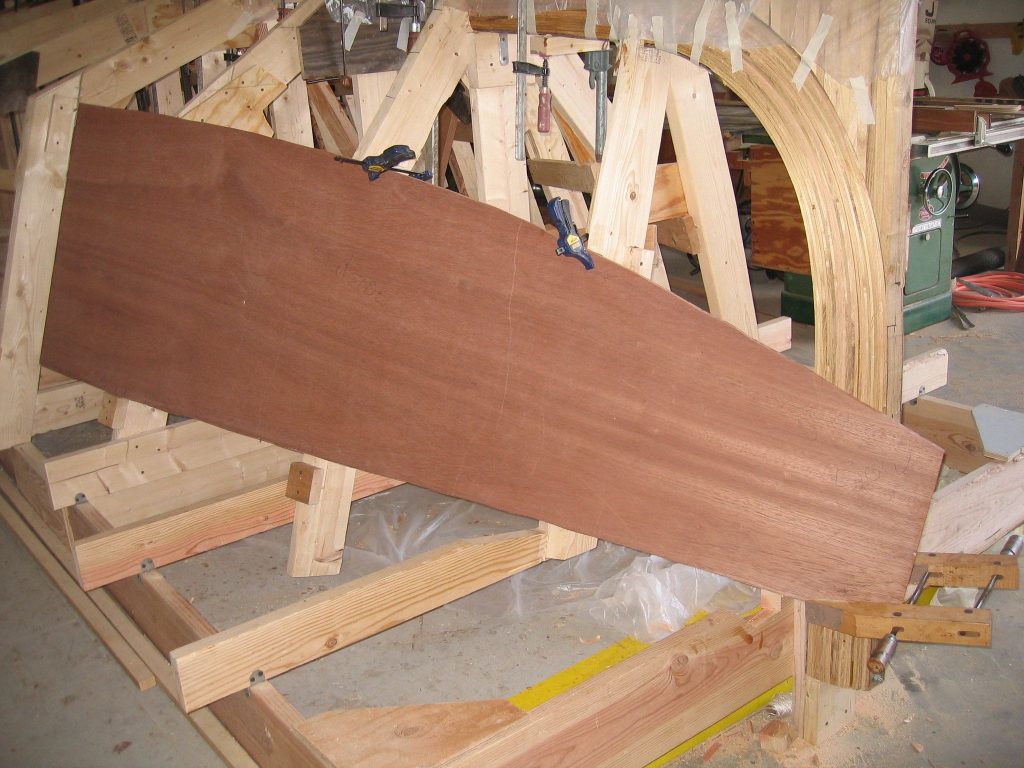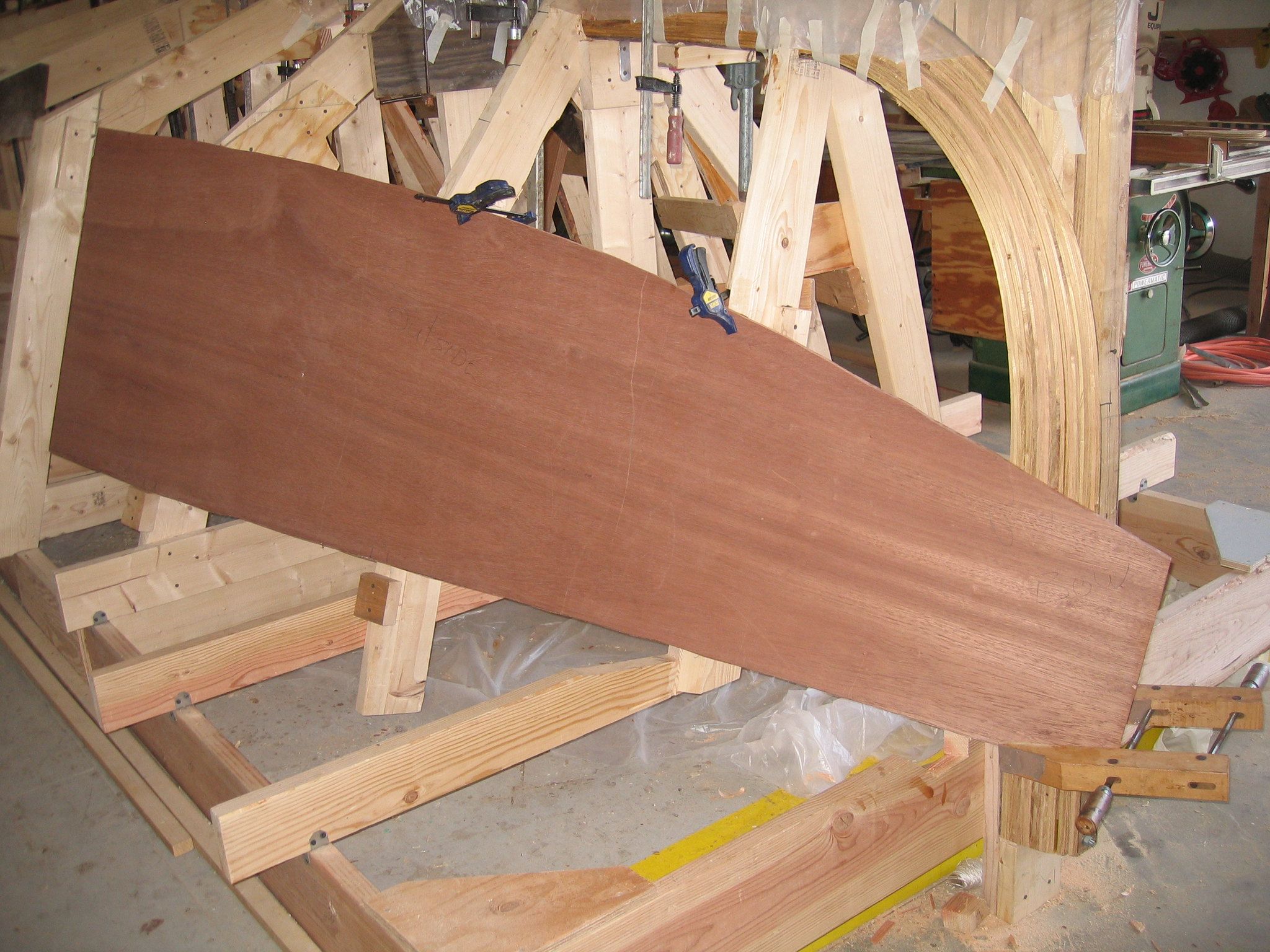Sapele is a somewhat exotic hardwood which comes from west-central Africa, from Sierra Leone to Uganda and ranging farther south to Angola. The Entandrophragma Cylindricum tree that sapele wood comes from can grow up to 180 feet tall, with a trunk diameter of 7 feet. This makes it one of the upper canopy trees of the West African forests. Even so, the tree’s size provides a considerable amount of lumber when harvested.
Sapele wood is often mistaken for mahogany, which it looks similar to. Some even refer to it as “African Mahogany.” However, it is harder and denser than mahogany, more on the order of white oak. This makes it a very useful wood indeed, for both interior and exterior applications, as well as marine applications, where it is used for accent topside, much as mahogany is. The density resists denting well. It is also stiff and resistant to shock loads, with good bending strength.
The grain of the sapele is more varied than mahogany, with some cross-grain. Heartwood is more likely to be straight-grained, albeit with more figuring than mahogany.
One unique thing about this wood is that it turns grey when left untreated. This does not affect the wood’s strength or size, which remains highly stable. Depending on the desires of the woodworker, this change in color can be a desirable property or one to be avoided by proper finishing of the wood.
Uses for Sapele
As mentioned earlier, sapele wood and plywood are used for marine applications, especially for decorative parts, such as rubrails, gunwales, coamings and trim strips. It might also be found used as decking. In those cases, the reddish-brown wood works with a lighter colored wood trim. Avoid any knots in wood used on boats, as those will cause problems over time.
Sapele is also used in the music industry, specifically in making guitars, where it is gaining in popularity, especially as a replacement for mahogany. It can be used for tops, sides and backs of acoustic or acoustic-electric guitars. Some use it for necks as well. With sapele being harder than either Honduran or African mahogany it is a superior choice for guitar necks. When used for guitar bodies, the harder sapele will produce stronger treble tones.
While predominantly used for marine and guitar building, sapele is also an excellent wood for making furniture. With a strength approximately equal to oak, it can be used for difficult pieces where light elements of the furniture need to be able to support a considerable amount of weight. The figuring of the wood and the color makes for an attractive appearance.
sapele is not as weather-resistant as redwood or cedar, especially with its tendency to turn grey, but it is still a great wood for outdoor furniture, especially when finished with a waterproof finish. It has also found a home in architectural applications, specifically hardwood flooring and doors, mostly due to its similarity in appearance to mahogany.

Plywood from Sapele
Sapele hardwood is comparable to the cost of walnut, making it a very reasonable alternative to domestic hardwoods. It is a bit difficult to find, as there are not that many suppliers who regularly carry it. If a lot of sapele is going to be needed for a project, it would be a good idea to plan ahead and make a custom order. That will probably also be cheaper, especially if a large quantity is needed.
It is unlikely that sapele plywood will show up in the local lumberyard, unless they carry an extensive supply of hardwood plywood. As with many other hardwood plywood varieties, it is best to try ordering this through a specialty house, whether that is a local brick and mortar trim and plywood supplier or one of the online ones. Pricing for sapele plywood, which is usually referred to as “sapele mahogany plywood” is comparable to other varieties of hardwood plywood and not as high as the cost of exotic plywood. It can be found in ¼”, ½” 5.2mm and ¾” thicknesses.
Of course, ordering plywood online means paying the shipping cost. This would be added into any orders placed at a local plywood and trim shop; with the difference being that the local shop would be receiving other things along with the plywood, allowing them to spread the shipping costs out over a larger number of individual pieces, reducing the apparent cost per piece. When purchasing from an online supplier, it is best to accumulate a large order so that shipping costs can be spread out in the same way.
As with any hardwood plywood, keep in mind that the face and back veneers will be thin, so can easily be damaged or sanded through. These two layers are appearance layers only, with the core layers of the plywood providing the strength. Take care to design and build projects in such a way as to minimize any machining or sanding of the face and back of the plywood.




